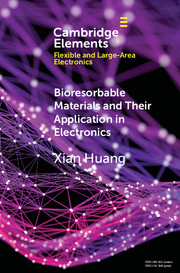Element contents
Bioresorbable Materials and Their Application in Electronics
Published online by Cambridge University Press: 28 October 2017
Summary
Keywords
- Type
- Element
- Information
- Online ISBN: 9781108290685Publisher: Cambridge University PressPrint publication: 16 November 2017
References
- 14
- Cited by

